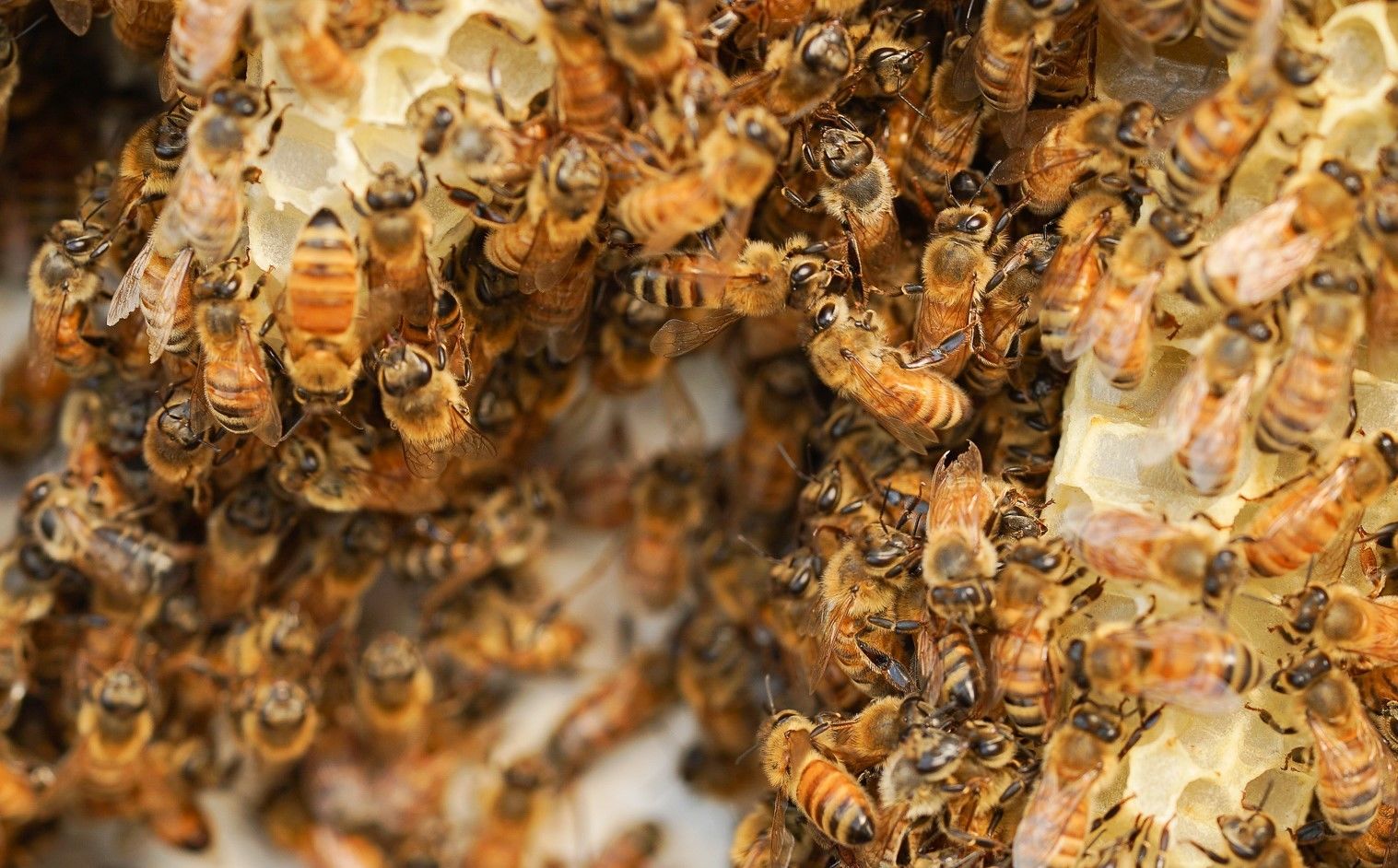How to Breed Queen Bees
Your bee hives already have a queen each – so why create more? Well, you might want to start a brand-new hive, re-queen a hive that’s lost its leader or even sell queens to other beekeepers. Raising queens isn’t something to do in your first year of beekeeping, but it’s simpler than it seems.
There are a few different ways to raise queens for your bee hive:
- Splitting a hive and letting the colony raise a new queen;
- Placing a frame of eggs into a queenless hive with sufficient pollen, and letting them raise multiple queen cells which you can then put into cages and wait to hatch;
- Overcrowding the colony so they prepare to swarm, building swarm cells on the outer edges of the frames;
- More complex grafting and cell punch methods.
Here’s our beginner’s guide to queen-raising – from simple to complicated:
Splitting a thriving hive
Splitting an existing bee hive in half pushes the bees left behind to raise a new queen – and you end up with an entirely new hive with very little effort. There are a few ways to do it. You can split one thriving hive into two colonies, or take bees from two strong hives and make a third. Learn more about how to split a bee hive here.
Essentially, you’ll be splitting the brood box in half. One brood box will be left with your queen, who will continue to lay. The other brood box, or new nuc, will have bees, pollen, and fresh 1-3 day old eggs. After 24 hours your queenless hive will recognise that there is a lack of the queen bee pheromone, and they’ll begin feeding royal jelly to a handful of eggs. This process, of feeding royal jelly to eggs, is what turns your normal bee larvae into queens.
Forced overcrowding
This method creates conditions that lead to a swarm – but prevents it before it happens. During the process, you need to keep a close eye on your hive – inspect every couple of days – so you don’t miss your emerging queen.
First, restrict the space available to your bees by removing empty comb. This gives the bees less room to move, store honey, and lay eggs, so it should prompt swarm behaviour before too long.
As the bees prepare to swarm, they will create several queen cells – these are larger, peanut-shaped cells at the edges of the comb. Once the queen cells have been filled and capped, you can carefully cut them out of the comb and place them in queenless hives to be raised there. If you don’t remove them in time, a queen could hatch and kill off the others.
When the queen cells have been removed, you can replace the frames of empty comb and give the bees room to move again. It’s also a good idea to use a swarm guard to stop the queen from leaving – if she’s around, the rest of the bees will stay as well.
Graft and go
Grafting involves moving larvae from standard cells to queen cells. From there, nurse bees take over and raise the larvae to queenhood in a queen raising (queenless) hive. Because you need to make contact with the larvae, it’s a delicate operation that can take some getting used to. That’s not to say that you shouldn’t try – but it might take trial and error to get it right.
Here’s what you need:
Pre-made queen cells: you can buy plastic queen cells or make wax versions. You’ll also need a cell-holding frame, which has built-in bases for the cells.
Grafting tool: you need a tool to transfer the tiny larvae from cell to cell without causing damage. Buy a grafting tool or try your luck with something you have around – some beekeepers use a fine paintbrush.
Queenless hive: you need to set up a queenless hive with a good number of nurse bees to care for the queen cells. Assemble an empty hive, add a frame or two of honey and pollen to sustain them, and shake the bees from a couple of brood frames down into the box. Do this the day before you remove the larvae, so they’re settled in and ready to go.
Mating nucs: these are like miniature hives designed for new queens. They come with brood frame for the queen to lay her first eggs, and built-in feeders to sustain her while she’s in the early stages.
Getting started
1.Find your brood.You need to know how old your larvae are to transfer them, so the first step is getting the queen to lay in a specific place. You can either place some fresh brood comb in the centre of the brood box and inspect it daily or confine the queen to one comb for 24 hours. Once she lays fresh brood, mark them or keep a record of their placement.
2.The scoop.When the larvae are four days old, it’s time to transfer. Using your grafting tool, carefully scoop each tiny larva from the worker cell to a wax or plastic queen cell. Some beekeepers put a tiny drop of water in the bottom of the queen cell, to make it easier to get the larvae off the tool. Place the queen cells in your cell holding frame and pop the entire thing into the queenless hive.
3.Watch and wait. Nurse bees will care for the larvae for the first few days, then cap them around the fourth day.
4.The final move. Around six days later – when the larvae are 14 days old – move each queen cell to a mating nuc. The queen should hatch a day or two later, at around 16 days old.
5.Check and observe.Leave the queen in her nuc for the next couple of weeks, checking frequently to see whether she has started laying. If she hasn’t laid any eggs after two weeks in the nuc, she may not be viable – and you may need to start the exercise again.
6.Ready to go. If your queen has laid eggs in the nuc box, your transfer was a success. You now have the beginnings of a new hive, which can be sold or used to expand your operation. If you have managed to raise more than one queen, even better.
Give raising queens a go
Raising queens is sometimes seen as an expert-level beekeeping skill – but it’s more straightforward than it seems. Like any skill, in beekeeping or otherwise, it’s about giving it a go and being prepared to fail a few times before you get it right.

